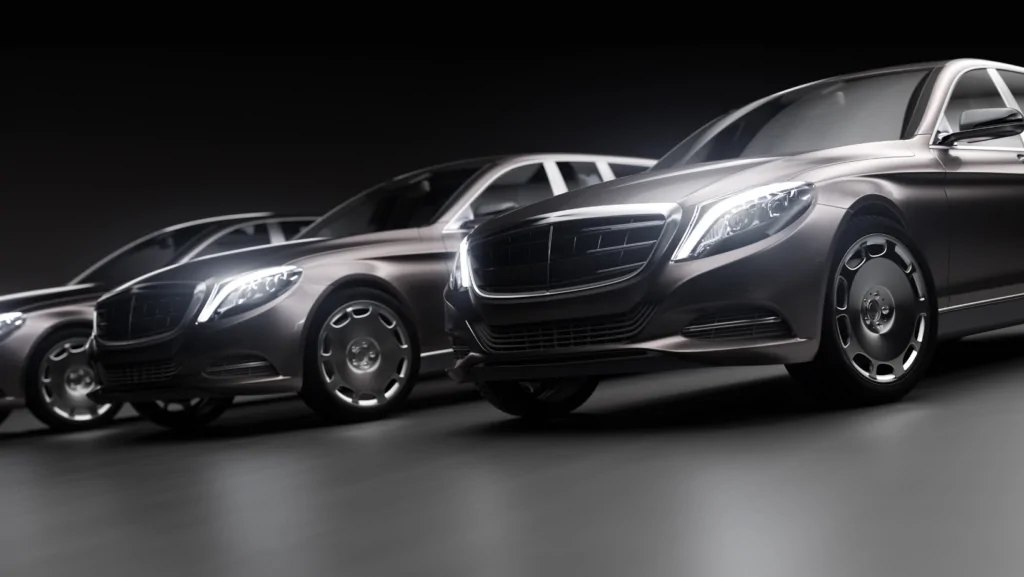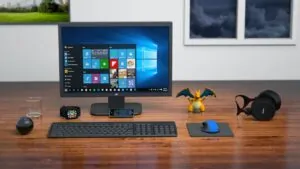Mitsubishi Motors, a Japanese automobile manufacturing company, oversaw a glorious couple of decades between the 1980s and the early 2000s. From thereon, the company lost its footing and was the center of several scandals and ginormous losses.
As of now, Mitsubishi Motors Corporation is trying to regain its composure as part of a tripartite agreement involving themselves, Nissan, and Renault. The question still remains – why did Mitsubishi fall to this extent?
We all grew up playing the popular Need For Speed video game series. The former PlayStation sensation showcased some amazing car brands, including the likes of Lamborghini, Ford, and – you guessed it right – our very own Mitsubishi Motors.
If you’ve played the game enough, you’ll remember the powerful Mitsubishi Lancer Evolution gliding through the race tracks, past the opposing cars. It was a wondrous, beautiful vehicle.
In retrospect, we would never expect a car like that to go out of business. So, what happened to Mitsubishi Lancer; is it still on the market? And if so, it would be hard to imagine why a car of that caliber is not helping the company generate some sales.
Unfortunately, Mitsubishi discontinued the production of its Lancer models in the early months of 2017 following a steep drop in performance and sales.
Since then, the company is on a constant downward spiral.
But the company did not disappear all of a sudden. There were early signs foreshadowing a dark ending.
In this article, we’ll look at the most prominent reasons behind Mitsubishi’s downfall while also delving neck-deep into the company’s rich, rich history.

Why Doesn’t Mitsubishi Make Cars Anymore?
Mitsubishi Lancer Evolution was one of the company’s top models. But they stopped producing the model in 2017.
We have a pretty solid idea of why Mitsubishi stopped making EVO all of a sudden. They wanted to focus their production on manufacturing crossovers and hybrid vehicles.
You know, the sort of cars that look like a blend between an SUV and a traditional four-wheeler? That’s what Mitsubishi thought would be their redemption arc.
Unfortunately, they failed in that department.
See, the company didn’t stop making cars. They just stopped making all the cars that made them popular.
Currently, they are only producing four models. First is the Mirage, an average-looking basic car with its cheap price point as the Unique Selling Proposition. Next, they came up with Outlander and Outlander Sport models, two simple SUVs.
Last up, they came up with a crossover called Eclipse Cross. There’s nothing wrong with that SUV. It’s just simple and bland. But what made the company loyalists mad was the fact that Eclipse Cross was also the name of one of Mitsubishi’s golden-age vehicles.
As you would expect, it didn’t do well in the market.
So, it’s just as simple as that – Mitsubishi Motors is still making cars. They’re not making the right ones, however.
As of now, their selling point is the cheaper price instead of competitive models.
What are the Common Problems with Mitsubishi?
As we mentioned, Mitsubishi has been the eye of the storm for a world of problems and scandals.
Even though the company is still surviving (barely, though), there were times when it felt like the veteran manufacturing brand was about to cough up its last breath.
There are several reasons behind the company’s unending struggle. Let’s unearth some of them.
RECOMMENDED READ: What Happened to Mino Monsters
Philosophy Shift
Let’s get one thing right – Mitsubishi was not the Lamborghini of any era. Sure, they have been around a long time. But they never really dominated the market or became the topmost global brand.
Sure, at one point they were the sixth-largest automobile manufacturer in Japan and only the 19th-largest in the world. But they were never one of the top guns like Ferrari or Rolls-Royce.
Even so, they had some respectable cars. The Evolution Lancer, for instance, was a legend. It featured in many films and games including, as we mentioned, the Need For Speed franchise.
Mitsubishi 500, the charming vintage model, was the first mass-produced passenger vehicle in the market following the horrors of World War II. The point is; people knew that Mitsubishi offered something. They had a large, loyal customer base.
Now, they’re not making bold cars to create market trends. Instead, they simply want to create cheap products and play the ‘price game’ against their opponent.
Unfortunately, the modern isn’t buying that – no pun intended.
Asia’s Economy Decline
Earlier, Mitsubishi enjoyed a nice push in the 1980s and 1990s because of its hold in the Southeastern market. However, when the economic crisis hit Asia in 1991, the company lost its footing.
One of the reasons behind the economic crisis in this region was the Plaza Accord, which sought to equalize the value of the American Dollar and Japanese Yen.
Unfortunately, the move ended up a disaster for Japan and Mitsubishi.
Manufacturing Defect Scandals
A company like Mitsubishi should have a clean history. However, that’s far from reality.
In the course of history, the automobile giants had to admit that they were covering up defect problems in their vehicle models.
In 2000, they admitted to covering up four defects. But by 2004, the media uncovered twenty-six more defects in car models that were produced as far back as 1977.
These defects included leakages in the fuel system, brake failures, issues with the clutch, and so on. As a result of this scandal, Mitsubishi had to recall over one million vehicles for repair and revaluation, leading to irreversible losses.
Common Vehicular Problems
Even after being the protagonist of two major corporate scandals, Mitsubishi Motors did not reevaluate its manufacturing process.
Problems with brakes, transmission, and air-conditioning are still widespread in many of the modern vehicles that the company is producing. In addition, hardware problems like constant vibration on the steering wheel, issues with oil filters, and piston defects are common.
As more and more customers reported these problems, the market size of the company diminished progressively.
The 0-0-0 Strategy
If you think things cannot get worse for Mitsubishi, you’re very wrong.
In the early 2000s, the company wanted to re-establish itself. They decided their “0-0-0” finance strategy would do the trick.
The “0-0-0” basically signified 0% down payment, 0% interest, and $0 monthly payments. The company, it seemed, was giving away cars for free by deferring payments.
It was a desperate move. One that didn’t pay off.
Initially, the strategy seemed to work. But after the end of the fiscal year, many buyers defaulted. So what happened? Mitsubishi didn’t receive any money for many of their cars. They got back the cars, but their value dropped significantly because they were used.
The 0-0-0 strategy will honestly get 0 marks from the finance department.
Failure to Capture the US Market
Even when Mitsubishi was doing well in Japan, they never really appeased the Americans. So, why is Mitsubishi not popular in the US? Let’s find out.
There’s no clear answer to why Mitsubishi never made it big in the United States. One reason, experts state, could be that their models never really appeased the purchasing nature of the Americans.
But that is too general an answer, don’t you think?
A more plausible explanation, according to us, is the timing and the nature of Mitsubishi’s entrance into the US market.
The biggest mistake they made was partnering with Chrysler Corporation.
Chrysler was bleeding itself when they somehow convinced Mitsubishi to enter into an alliance. And when they did, Chrysler never delivered.
The US-based manufacturers launched substandard Mitsubishi models with several quality issues and questionable defects.
The US market didn’t like that. They preferred Nissan’s strategy, where the company made a name for itself by creating its own brand.
Another mistake that Mitsubishi made was trying to compete with Toyota and Nissan. They simply did not have enough resources to gain an edge, and ultimately fell off the tracks.
Other Problems
A company with so many problems – you wouldn’t expect them to have a history of more than a hundred years in the bank.
Apart from scandals and manufacturing defects, other problems contributed to the company’s gradual downfall. Its partnership and production capabilities in India were severed in the previous decade due to a shortage of demand.
The Australian operations went sideways after three years of success as well. Because of that, the company lost a significant part of the automobile market share.
The company also lost its footing in Western Europe and North America following disastrous performances.
All of these eventually forced the company representatives to rethink the company’s operations. As a result, the Nissan-Renault-Mitsubishi tri-party alliance finally came to forgery.
POPULAR READ: What Happened to Minecraft
The History of Mitsubishi
To keep your sanity intact, we’ll not come close to recapping every inch of the company’s widespread historical saga.
There’s just so much to uncap.
But to paint a general picture – Mitsubishi started in 1870. Just a disclaimer, we’re talking about the parent company, Tsukumo Sokai. The founder of the company, Yataro Iwasaki, launched the venture with three of his aging, veteran steamships.
After three years of operation, he changed the company name to Mitsubishi Shokai.
From there on, the nephew, brother, and son of Iwasaki took over the company and launched three different segments. They were the ones who laid the foundation for the original Mitsubishi companies.
As you would expect, a company with a deep history had market penetration in several industries. These included automobiles, heavy machinery, industrial machinery, air-conditioning and refrigeration, infrastructure equipment, and so on.
The company’s venture in the world of automotive started in 1917. They manufactured Model A, the first passenger car in Japan.
From there on, the company made several prototypes and products to launch into the market.
Unfortunately, the company had to reposition itself during the Second World War. Mitsubishi started manufacturing military aircraft during this period, halting their passenger car production.
However, they went back to business right after the end of the bloody World War.
After years of operations, the company finally started Mitsubishi Motors, the automobile division that we all came to know and love.
Will Mitsubishi Make a Comeback? Our Verdict
Mitsubishi has all but disappeared. They are still making plans to revitalize their performance in the market. But it seems like a long shot.
But you shouldn’t lose your hope just yet.
The company is making efforts to re-enter the Indian market, a move that will dictate the course of its comeback.
As for the European markets, the company CEO has a strategy in mind. According to him, Mitsubishi’s focus on producing well-designed electric cars will have a role to play in the company’s penetration in the European markets.
With a world making slow but gradual strides toward electrically-powered vehicles, the move might just pay off.
But this time, Mitsubishi needs to play its card right. They have the brand name, they have the loyalists. They just need to launch cars that once used to define their brand.
Either way, let’s all hope for the best.
Final Words
Mitsubishi is not going down without a fight. They have struggled for the past couple of decades.
But they’re still alive and in the market. Sure, they might not have the best products right now.
But as long as they strategize and make an effective comeback, there’s still a chance that they will live up to their potential.















